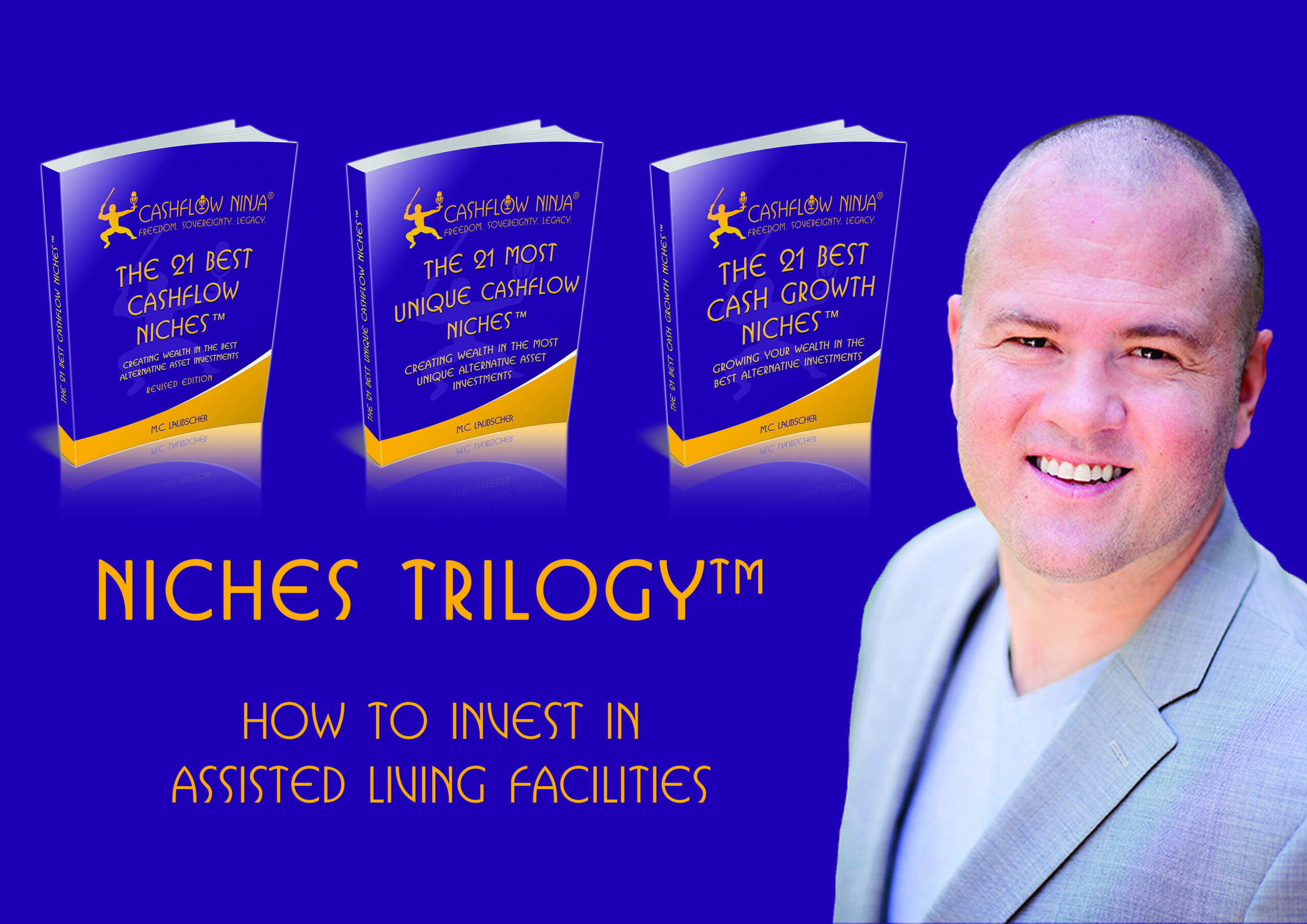
Assisted living facilities, or ALFs, are a beacon of support for older adults who need help with daily tasks but need more time for the intensive medical and nursing care that nursing homes provide. Picture a bridge connecting independent living and nursing homes; that’s what these facilities are essentially. They offer a well-rounded mix of housing, meals, personal care services, and health care, all designed to cater to individuals who need assistance with their daily activities. The ultimate goal? To create an environment that feels like home and emphasizes independence, privacy, and choice.
Why Invest In Assisted Living Facilities?
Investing in Assisted Living Facilities (ALFs) has steadily gained popularity, and it’s not hard to see why. The allure of this sector lies in a blend of demographic trends and financial incentives that create a unique investment landscape.
Let’s start with the age factor. We’re witnessing a cultural shift as the baby boomer generation, a significant part of the U.S. population, is aging. This increased senior population naturally leads to a heightened need for care in the coming years.
Then there’s the marvel of modern medicine. Healthcare advancements have increased life expectancy, often correlating with a greater demand for long-term care solutions. It’s like watching a ripple effect across the health sector; ALFs are right in the center.
One of the most attractive aspects of investing in ALFs is the stable cash flow. It’s all about consistency here. Residents typically sign long-term leases, which ensures a steady revenue stream. Moreover, their payment sources are diversified, from personal savings and pension funds to insurance and government assistance.
Another point worth noting is the resilience of ALFs. Even when the economy takes a hit, the demand for senior care remains constant, making ALF less susceptible to market fluctuations than other real estate assets.
For intelligent investors, ALFs also present operational opportunities. Think staffing improvements, effective marketing strategies to keep occupancy rates high, or leveraging technology for better care and operations. Each of these could boost profitability.
But let’s remember the real estate component. Beyond the business aspect of ALFs, there’s potential for the property to appreciate over time, offering an additional layer of return on investment. Add to that the tax advantages of real estate investments, including depreciation and mortgage interest deductions, and you’ve got quite the financial package.
Investing in ALFs also allows for portfolio diversification, a departure from traditional stocks and bonds. Plus, the personal fulfillment comes from knowing your investment enhances seniors’ quality of life.
With the increasing demand for senior care, there’s more room for growth in the ALF sector. The potential is there, whether it’s expanding existing facilities or acquiring additional properties. But be warned, this isn’t a walk in the park. The high barriers to entry, including a strict regulatory environment, significant initial capital requirements, and the need for specialized knowledge, can deter new competitors.
Assisted Living Facilities Ecosystem
The assisted living industry is a complex web of interconnected entities, each playing a vital role in its functioning.
At the helm, you have the operators. These individuals or entities are the driving force behind the day-to-day operations of the facilities.
Then, there’s another key player – Real Estate Investment Trusts, or REITs. Some investors dip their toes into the industry through these trusts.
Of course, we can’t forget about the heart of these facilities – the residents. Seniors and individuals who need assistance form the core clientele of ALFs. They’re the reason these facilities exist in the first place.
Healthcare professionals provide the care and expertise these residents need. From on-site nurses and visiting doctors to therapists and other medical professionals, they’re the backbone of the care provided in these facilities.
The regulatory bodies are keeping everything in check. These state and sometimes local entities oversee the standards and practices of ALFs, ensuring everything is up to code and residents receive the best care possible.
Finally, there are the service and product vendors. These companies provide various services and products, from medical equipment to food and entertainment.
How To Generate Income
The assisted living facility space is a fascinating world, boasting various business models catering to different needs and budgets. The traditional private pay model stands out as the most common among these models. Here, residents or their families foot the bill for services out of pocket.
Then, there’s the low-income assisted living model. Aiming to make assisted living accessible for lower-income residents, these facilities often join with government subsidy programs. While the revenue per resident might be lower, they find their profitability inefficient operations and economies of scale.
On the other end of the spectrum are the specialized care facilities. These ALFs zero in on specific medical conditions or needs, such as memory care units for Alzheimer’s patients. Their specialization allows them to charge a premium for their services. It’s like going to a specialist doctor versus a general practitioner.
Some investors prefer to focus solely on the real estate aspect, and that’s where the real estate model comes into play. In this scenario, investors own and lease the property to ALF operators. It’s a win-win situation, providing steady rental income and potential property appreciation while sidestepping the daily operational complexities.
As in many industries, franchising has entered the ALF sector. With the franchise model, investors can buy into recognized brands, reaping the benefits of established operating systems, marketing, and support.
Finally, there’s the hybrid model. Some facilities blend independent living, assisted living, and skilled nursing into one community. This approach allows residents to transition between different levels of care without moving, offering diverse services. It’s like a one-stop shop for all your care needs.
So, you see, the world of assisted living facilities is as diverse as it is intriguing. Each model has unique features and caters to different needs, making it a dynamic and adaptable industry.
Let’s dive into the various ways investors can profit from ALFs.
Primarily, ALFs generate income through monthly resident fees. Consider it a subscription service, where these fees usually cover essentials like housing and base services. Additional care fees may be charged depending on a resident’s specific needs. The beauty of this model is its flexibility, with residents requiring minimal assistance paying less than those needing comprehensive care, which is often reflected in tiered pricing. Moreover, ALFs can offer a range of additional amenities and services for an extra fee. From premium meal options to specialized activities or therapies, there’s much to offer.
Another critical factor influencing ALFs’ revenue is occupancy rates. It’s simple – the more residents, the higher the revenue. By maintaining a high standard of care, offering diverse activities, and building a solid reputation, facilities can attract and retain residents, boosting occupancy rates.
Some ALFs go the extra mile by offering specialized care units for residents with conditions like dementia or Alzheimer’s. These units necessitate specialized care and staff training, charging facilities a premium for these services.
Beyond care, ALFs can also rake in revenue by offering ancillary services. Think beauty salons, physical therapy, or specialized medical services. It’s all about adding value and making life easier for residents.
For some ALFs, government programs like Medicaid are a significant source of income. Facilities catering to eligible residents receive regular payments from the government, ensuring a consistent revenue stream.
The real estate aspect of ALFs also offers potential profit. As the property appreciates over time, it can be refinanced to unlock equity or sold at a profit.
As they say, there’s strength in numbers. Investors operating multiple ALFs can leverage economies of scale. Centralized management, bulk purchasing, and shared resources across facilities can significantly improve profit margins.
Regarding acquisition and exit strategies, the savvy investor might consider buying underperforming ALFs, revamping operations and profitability, and then selling them at a premium. There’s also the potential of selling to larger chains or real estate investment trusts (REITs) looking to expand their portfolio.
If an investor builds a successful ALF brand, they can franchise or license the model to other operators, earning ongoing fees.
Partnerships and affiliations also offer potential revenue. Collaborating with healthcare providers, hospitals, or rehabilitation centers can lead to steady resident referrals and opportunities for joint ventures to provide additional services.
Finally, the tax benefits are worth noting. Investors owning both real estate and a business can leverage various tax incentives. Depreciating the property can offset some income, reducing taxable income.
How To Lose Money
Investing in assisted living facilities (ALFs) is challenging. While it can be a profitable venture, the path to success is dotted with potential pitfalls that can make the difference between a thriving investment and a losing proposition.
Take regulatory changes and compliance, for instance. The assisted living industry operates within a tight regulatory framework, and any shifts in these rules can ramp up costs significantly, even leading to fines or closures in some cases. It’s like playing a game where the rules can change any moment – you must stay on your toes.
Then there’s the threat of lawsuits. Due to the vulnerable nature of the population they serve, ALFs are often in the legal crosshairs, whether related to patient care, accidents, or other liabilities. A high-stakes environment where one misstep can lead to significant legal woes.
And let’s remember management. Poor facility management can trigger a domino effect, leading to lower occupancy rates, high staff turnover, and ballooning expenses.
Staff turnover is another critical factor. This rate can be high in the assisted living industry, leading to increased costs and potentially impacting the quality of care.
Overexpansion is a common pitfall, too. Some investors might bite off more than they can chew by purchasing or building too many facilities too quickly, leading to financial struggles.
Economic downturns also pose a risk. During recessions, families might opt to care for elderly relatives at home or seek cheaper alternatives, reducing the demand for ALFs.
Reputation damage is another concern. Any adverse incidents related to care lapses or public relations mishaps can tarnish an ALF’s reputation, impacting occupancy rates and revenues. It’s a reminder that in this business, reputation is everything.
Overleveraging can be a double-edged sword. While debt can help fuel growth, heavily indebted can be risky, mainly if cash flows decrease or interest rates rise.
Market oversaturation is another hurdle. Investing in areas with an oversupply of ALFs can result in low occupancy rates and stiffer competition.
Rising operating costs are a constant challenge. Any unexpected cost increases, be it utilities, food, insurance, or wages, can eat into profit margins if not managed effectively.
A decline in property value can also take a bite out of profits. If the real estate associated with an ALF loses value due to market conditions or neglect, it can lead to losses when trying to sell or refinance.
The demographic landscape is another factor to consider. While the aging population suggests increasing demand for ALFs, local demographic shifts can affect demand, such as younger populations moving in.
Inadequate due diligence can lead to unforeseen issues, such as structural, legacy resident, or inherited staff problems.
Lastly, natural disasters pose a risk. Floods, hurricanes, or earthquakes can negatively impact ALFs and cause financial losses. It’s a sobering reminder that sometimes, despite our best efforts, factors beyond our control can throw us off course.
Positives & Negatives Of Assisted Living Facilities
Positives:
Growing Demand: With an aging population, especially the baby boomer generation, there’s an increasing need for assisted living facilities.
Recession-Resilient: While no industry is entirely recession-proof, the need for elderly care doesn’t decrease significantly during economic downturns.
Steady Cash Flow: ALFs can provide consistent monthly income from resident fees if appropriately managed.
Real Estate Appreciation: In addition to operating income, the real estate associated with ALFs can increase in value over time.
Tax Benefits: Real estate investments, including ALFs, offer depreciation advantages and other potential tax benefits.
Diversification: ALFs can be an excellent way to diversify an investment portfolio beyond traditional stocks and bonds.
Social Impact: Investors can take pride in providing a valuable service to the community and improving the quality of life for seniors.
Negatives:
Regulatory Challenges: ALFs are heavily regulated, and compliance can be complex and costly. Regulations can also change, affecting profitability.
Management Intensive: Successful ALFs require effective, hands-on management. Poor management can quickly result in financial losses and damage to reputation.
High Initial Investment: The start-up or acquisition costs for ALFs can be high, especially when considering real estate prices, renovation costs, and licensing.
Liability Concerns: Given the vulnerable nature of the population, ALFs can face lawsuits related to patient care, accidents, or other issues, leading to potential financial and reputational damage.
Staffing Challenges: Hiring, training, and retaining qualified staff can be challenging and expensive. Staff turnover can affect the quality of care and the bottom line.
Market Competition: In some areas, there might be an oversaturation of ALFs, leading to increased competition and making it harder to maintain high occupancy rates.
Economic Factors: While the demand for ALFs remains relatively consistent, broader economic factors can still impact profitability. For instance, families might choose less expensive care options during a recession.
Maintenance and Upkeep: Regular maintenance and updates are crucial for keeping the facility up to standards and appealing to potential residents, which can be costly.
Investment Opportunity Filter™
The Investment Opportunity Filter™ evaluates an investment opportunity based on cashflow, tax benefits, appreciation, and the leverage it provides.
Assisted living facilities score a 4/4 with The Investment Opportunity Filter™.
Assisted living facilities produce significant cashflow, have great tax benefits, and the asset can increase in value through operations and management. It also allows leveraging others’ skills sets, capabilities, networks, and capital.
Download all the Niches Trilogy Books:
The 21 Best Cashflow Niches
Digital: https://www.
Audio: https://podcasters.spotify.
The 21 Most Unique Cashflow Niches
Digital: https://www.
Audio: https://podcasters.spotify.
The 21 Best Cash Growth Niches
Digital: https://www.
Audio: https://podcasters.spotify.
Listen To Cashflow Ninja Podcasts:
Cashflow Ninja
https://podcasters.spotify.
Cashflow Investing Secrets
https://podcasters.spotify.
Cashflow Ninja Banking
https://podcasters.spotify.
Share This
Related

898: Tom Dunkel: The Wealth Builders Playbook
My guest in this episode is Tom Dunkel. Tom Dunkel brings more than 30 years of experience in real estate, finance, and investing to his role as Managing Director of Eagle. Known for his disciplined approach and unwavering alignment with investors, Tom personally invests in every deal he presents, ensuring absolute trust and shared outcomes…

897: Eugene Shatsman: How To Grow & Scale Your Business Right Now
My guest in this episode is Eugene Shatsman. Eugene is the Managing Partner of National Strategic Group. Eugene teaches business strategy, consumer behavior, marketing, and what all of us want – how to drive more business into our businesses. His team at National Strategic has over 100 people, and they do a tremendous amount of…

896: Chris MacIntosh: Opportunities Around The Globe Right Now
My guest in this episode is Chris Macintosh. Chris has founded and built several multi-million dollar businesses in the investment arena, including overseeing the deployment of over $30m into Venture Capital opportunities and advising family offices internationally. Before this, Chris built a career at Invesco Asset Management, Lehman Brothers, JPMChase, & Robert Flemings. Interview Links:…
